UNIT 3: Land-Based Empires c. 1450 - 1750
1/11
Earn XP
Description and Tags
Name | Mastery | Learn | Test | Matching | Spaced |
|---|
No study sessions yet.
12 Terms
Unit 3
Land-based Empires
c. 1450 - 1750
expansion, administration, and belief systems
utilization of GUNPOWDER
Land-based Empires
power comes from the extent of its territorial holdings

Ottoman Empire
mostly located in Southwestern Europe
Islamic culture - SUNNI MUSLIM
Factors of the Ottomans:
adoption of gunpowder weapons allowed the empire to rapidly expand
Conquered Constantinople: renamed to ISTANBUL in 1453 (through the use of gunpowder)
allowed for more expansion past the Roman Empire into Eastern Europe
Christian Boys: JANNISSARIES
policy of enslaving boys and converting them into Islamic faith
trained to become a part of an elite army force
Devshirme: trained bureaucracy who knew how to fight
taxation - Tax Farming:
auctioned taxation rights to the highest bidder
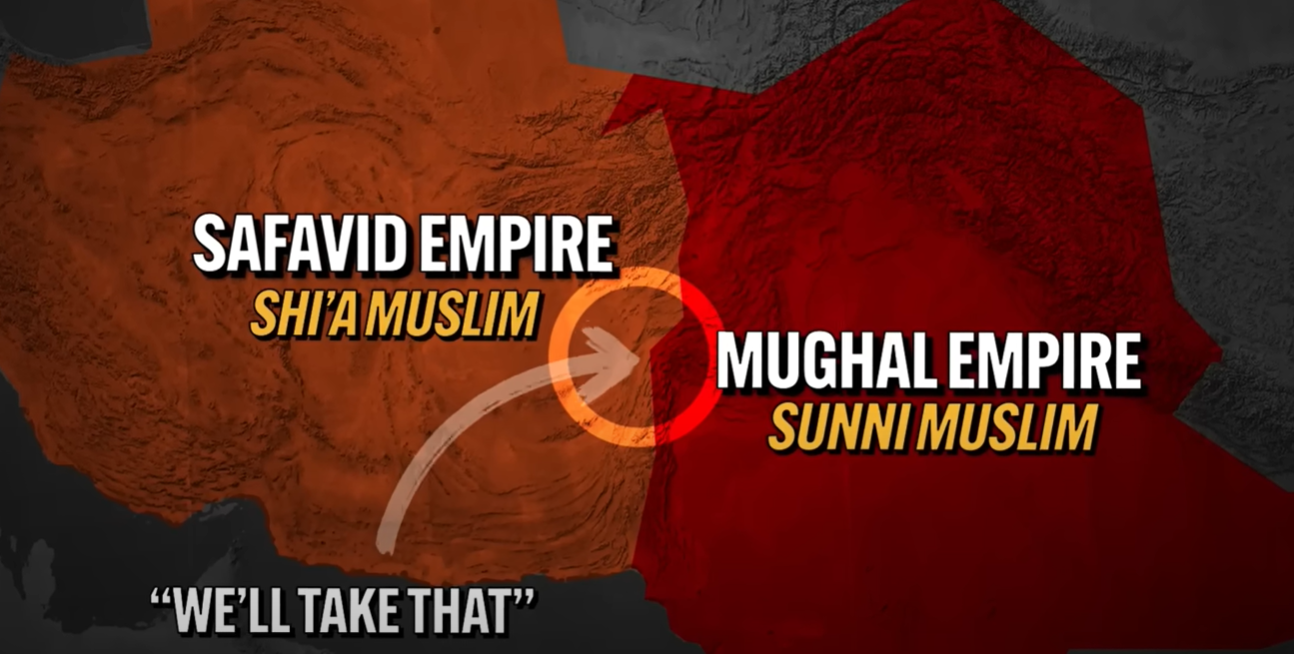
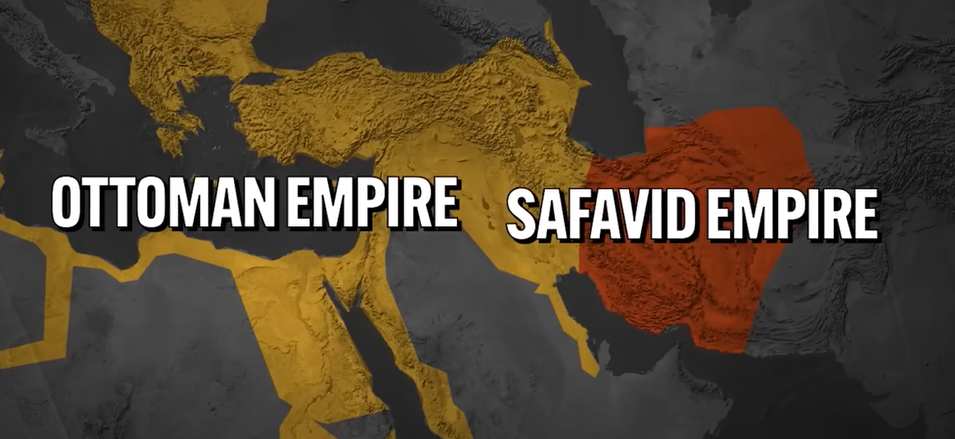
Safavid Empire
led by SHAH ISMAIL
expanded rapidly through conquering and raiding neighboring territories
Islamic culture - SHI’A MUSLIM
Military:
SHAH ABBAS: adoption of gunpowder weapons to create an enslaved army
highly trained and became full-time soldiers
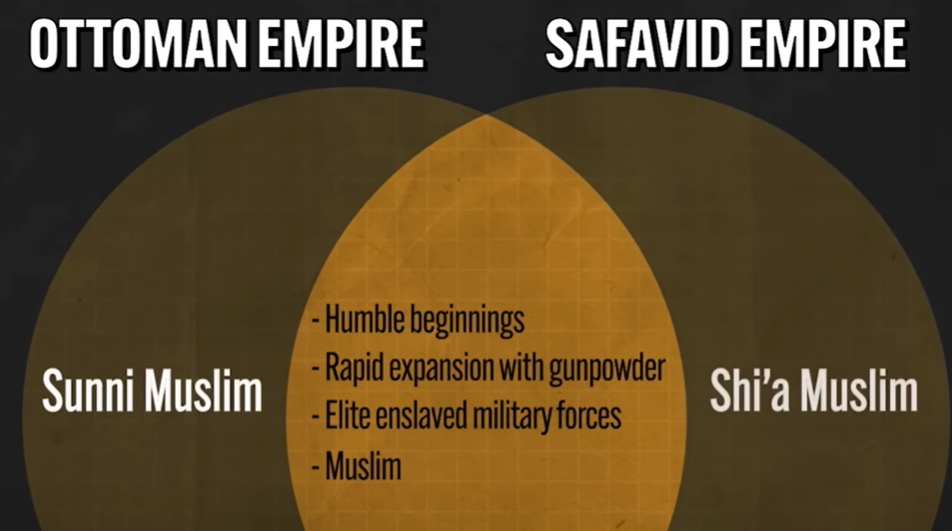
Ottomans VS. Safavids
Ottoman Empire: SUNNI MUSLIM
Sunni Muslim: rightful successor of Muhammad could be anyone spiritually fit for office
Both:
rapidly expanded through the use of gun powder
Muslim/Islamic cultures
elite military forces through enslaved individuals
Safavid Empire: SHI’A MUSLIM
rightful successor of Muhammad could ONLY be blood relatives of him
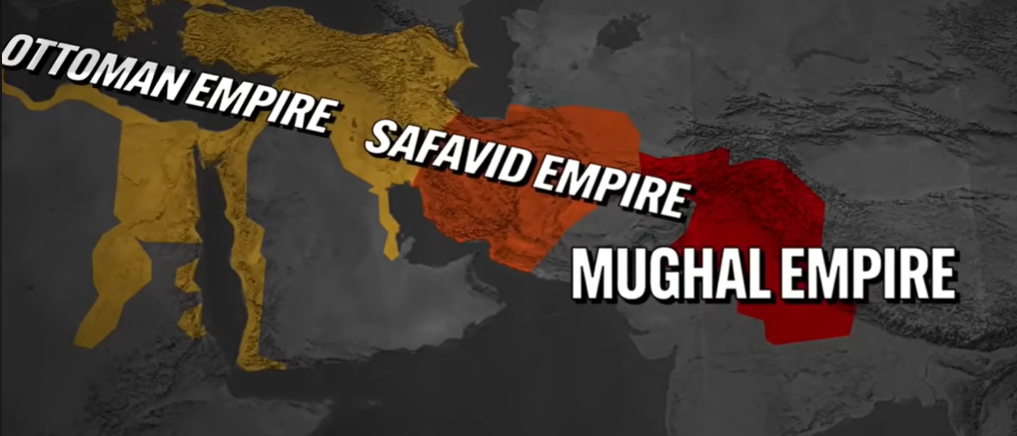
Mughal Empire
located in South and Central Asia
rapidly expanded through gunpowder weapons
Delhi Sultanate (majority Hindu) previously conquered by BABUR
AKBAR came into power (BABUR’s grandson)
compromised Hinduism and Islamic faith
majority Muslims over minority Hindus
religious tolerance: DIVINE FAITH - bring people of different faiths together
Taxation - Zamindar System:
local elites collected tax off of peasants on their land

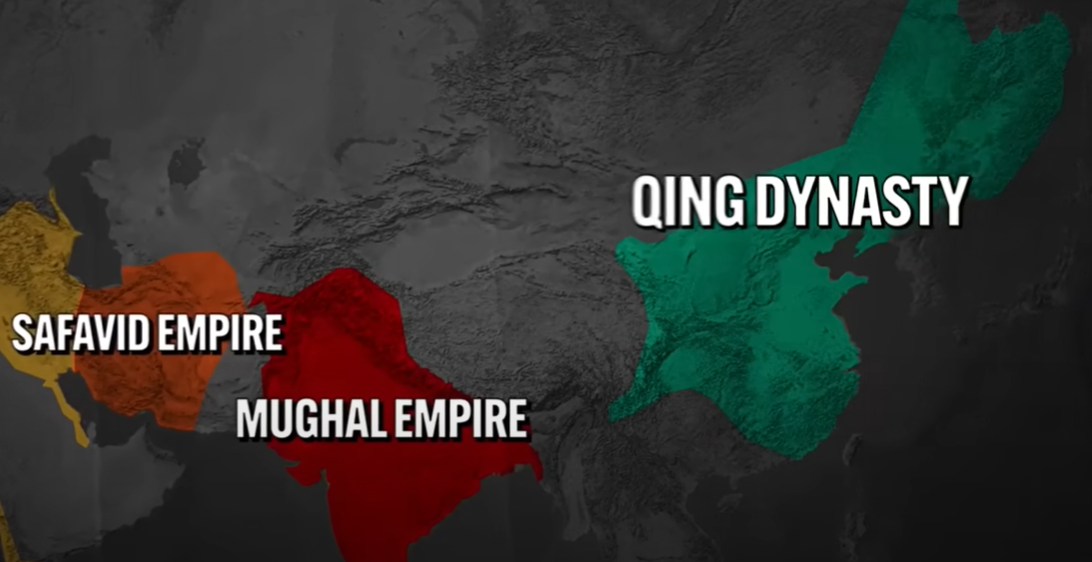
Qing Dynasty / Manchu Empire
The Manchus: a distinct ethnic group from Manchuria
established the Qing Dynasty after conquering the weakened Ming Dynasty (previously there)
Manchu - Confucianist beliefs
all empires around were Han (outsider)
Emperor KANGXI:
hung imperial portraits of himself around the city
he is surrounded by books - displaying that he is a legitimate Chinese Ruler (morality and education)

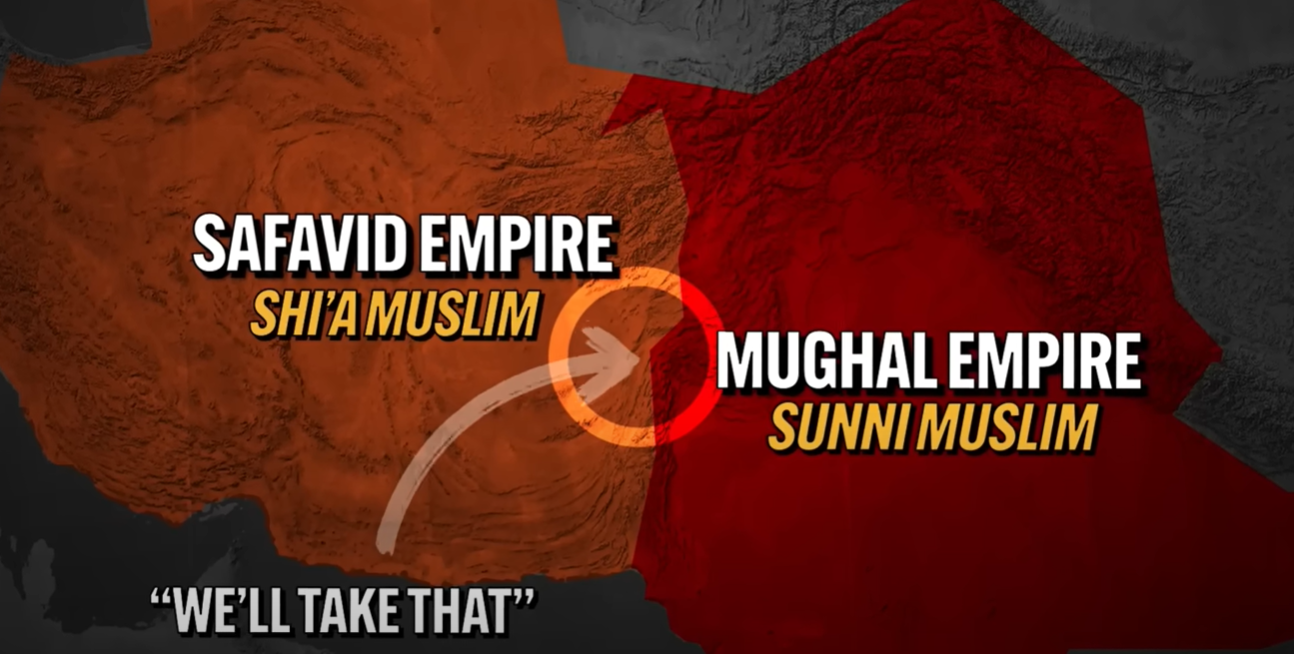
Safavid VS. Mughal: Conflict
series of wars fought over territories
while the Mughals were entertained in a different conflict to gain territory, the Safavids tried to take territory
Safavids fail at taking the land
no clear victory in this conflict
Safavids: SHI’A MUSLIM
Mughals: SUNNI MUSLIM
Administering of Power: Land-based Empires
How did rulers legitimize and consolidate power?
Legitimize: methods used to establish authority
Consolidate: transfer power from other groups to themselves
Large Bureaucracies: thousands of government officials that ensure laws are maintained
Religious Ideas (Art, Monumental Architecture, etc.): allowed a display of wealth and power to other empires
Tax Collection System: collecting revenue off of the people
Divine Right
monarchs received power from God on Earth
Christianity: Change & Continuity
heart of the Roman Catholic Church was in Rome
the Church had immense power:
people were exploiting the power of the church
Simony: people buying their position of power in the church
people were paying money to get rid of their sins
popes grew rich without spiritually connecting to the religion
CHANGE: Protestant Reformation:
Martin Luther: catholic monk that could read Latin
95 Theses - targeted corruption and listed his critiques/complaints
got excommunicated from the Church
his writing still spread (printing press, etc.)
caused widespread religious and political divisions across Europe
led to religious wars and conflicts between Catholics and Protestants
aimed to reform the practices and beliefs of the Roman Catholic Church
challenged the authority of the Catholic Church and the Pope, ultimately leading to the creation of various Protestant denominations
Sikhism
syncretic blend of Hindu and Islamic doctrines
